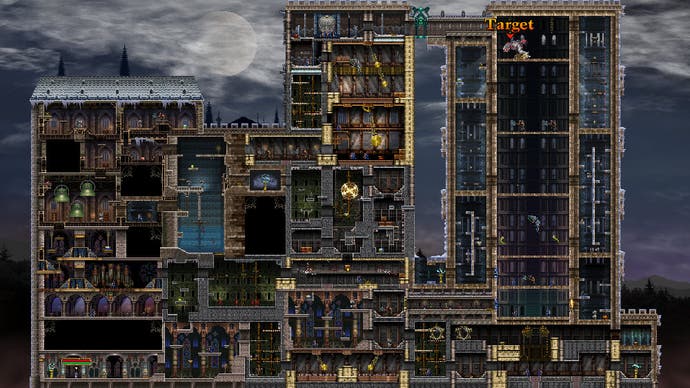Castlevania: Harmony of Despair
All the wrong notes.
The two-faced mansion from Castlevania: Symphony of the Night endures in players' memories because it's the perfect venue for adventure. You never stop pushing into new realms, yet there always remains another locked door or an unreachable ledge - something more to discover. And, most famously, at the moment you think the journey is over, you learn it's not even close. Symphony of the Night is a romantic's idealisation of life: a cycle of mystery and discovery with no end in sight.
That must be a frustrating irony for Koji Igarashi. As the producer of most Castlevania games since Symphony of the Night - including the latest, Castlevania: Harmony of Despair - the series has offered him scant opportunity for discovery. He's overseen a litany of spiritual sequels to Symphony of the Night on the Game Boy Advance and DS, all of them engrossing and fun, but familiar. It's clear that Igarashi wants to break free from the formula, but whenever he tries to explore a different vision of Castlevania, it's either forgettable (Castlevania: Lament of Innocence) or a debacle (Castlevania Judgment). Harmony of Despair is more of the latter.
Igarashi tries to split the difference between old and new in this year's third Summer of Arcade title on Xbox Live Arcade. The conventional ghoul-slaughtering action is set in sprawling but tightly compartmentalised 2D mansions, with a style and character design lifted (often in straight pixel-by-pixel copies) from earlier titles in the Symphony of the Night lineage. The modern wrinkle is that multiple players, up to six at a time, can band together online to fight through a stage together.

I'd advise players to take advantage of multiplayer mode, since the game is practically insurmountable - or at least an excruciating waste of time - by yourself. In each level, the camera starts out with a wide shot, taking in the dozens of rooms that make up that "chapter" and highlighting the boss's lair. Then it zooms in on your comparatively tiny character, and the epic stage is set. You wind your way around the mansion for 20 minutes or so, reach the boss, and die.
Of course. Everybody eats it on the first few attempts. That's what makes it a boss fight.
Yet Harmony of Despair has no sympathy for failure. When a boss claims victory, you start from the very beginning of the stage, with nearly a half-hour wasted. That's right: the first time you die, you have to make another run through the whole mansion. The second goddamn time you die, you have to make another goddamn run through the whole goddamn mansion. After the third time, you start using words that my editors won't let me print.
Even that might be acceptable if the journey through each castle were more exciting. It's a trudge, though. One of the first things I noticed about Harmony of Despair was that regardless of which character I chose - players are given a choice of five Castlevania luminaries including Alucard and Soma Cruz - my hero was in no hurry to get anywhere. I bent that analogue stick as far as I could, and yet the little sprite wouldn't speed up. My high school running coach used to make us do a strength drill where we ran laps in six inches of water; that's what it feels like to move around in this game.









